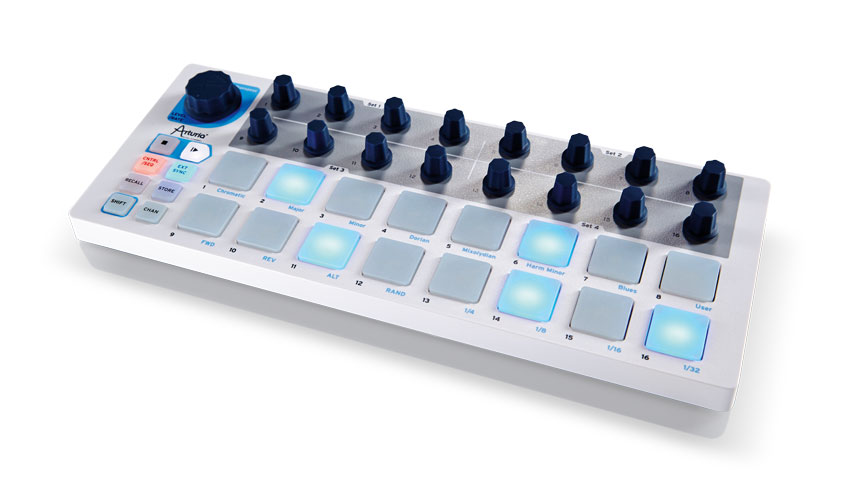MusicRadar Verdict
Fun, useful and flexible and, despite a few omissions, packs a big punch for the price.
Pros
- +
Step sequencer is great. Works as a controller and sequencer simultaneously. Flexible control and connectivity options.
Cons
- -
No MIDI or Gate/Trigger inputs. Can't use Control Center software at the same time as DAW.
MusicRadar's got your back
Arturia is firmly established in both the software and hardware worlds, with real-analogue synths at one end and their virtual brethren at the other. However, in between these lies Origin, its DSP-based hardware synth, and the Spark and Keylab controller-plus-software systems. BeatStep, which is part MIDI controller and part step sequencer, is a departure from any of these, as it is system agnostic.
To blur the lines further still, it has a USB socket as well as MIDI and CV/Gate outputs and can be used standalone or with a computer/iPad.
"BeatStep is only slightly larger than half an A4 page but feels substantial"
BeatStep is only slightly larger than half an A4 page but feels substantial. The case is made of thick plastic but there is clearly some ballast inside to weigh the unit down, which helps stop it bouncing across the desk when tapping the drum pads.
The 16 drum pads are of the rubber MPC-type with LED backlighting. Above these are 16 rotary encoders. Sadly these do not provide any visual feedback, though this is to be expected at this price point. To the left is a larger rotary encoder and eight smaller transport, mode and function buttons.
All connectors on the side are of the mini variety (mini USB and 3.5mm jacks for CV, Gate and MIDI). Thankfully the unit comes with a 3.5mm to MIDI socket adaptor (a USB cable is also included). As power is also provided via USB, you will have to stump up for a USB charger if you want to use BeatStep in standalone mode.
Stepping out
Let's start with the sequencer. At its core this is a 16-note step sequencer, where pitch is adjusted using the rotary encoders. In stop mode, turning an encoder will simultaneously sound its current pitch, with subsequent changes being transmitted as the value is adjusted.
Unlike traditional pot-based step sequencers, there is no fear of getting mistuned notes, as values are quantised to a chromatic scale by default (and there is an option of using other preset scales or even your own).
Want all the hottest music and gear news, reviews, deals, features and more, direct to your inbox? Sign up here.
The pads determine whether a step will play or not, but also allow you to determine the order of the sequence, step size and key. A few additional key presses allow you to adjust the sequence length. The large encoder controls Tempo and Transpose, though both of these can be controlled by transmitting clock or note info from your DAW.
In fact it is possible to transmit step sequences via MIDI and use the CV/Gate outputs independently (driven by MIDI from your DAW). This flexibility is admirable but it does mean you will need to make use of the included MIDI Control Center software.
This provides much more detailed editing of sequences (and adds Swing and Gate Time parameters), plus allows you to edit the MIDI commands sent by pads, encoders and transport buttons in Controller mode.
Here BeatStep functions in a manner similar to many other MIDI controllers (sending notes, CC, transport and program change messages), with the ability to switch modes whilst the sequencer carries on playing. Controller and Sequence presets may be stored and recalled (separately) into 16 memory slots.
BeatStep is very good value, though some compromises have been made. There appears to be no way of using the Control Center software at the same time as your DAW, and sequencer changes made on the hardware are not reflected in the software.
But the biggest drawback for us is the lack of MIDI or Gate/Trigger inputs. This would have made the unit much more capable in terms of integration within existing set-ups. Despite this, BeatStep is one of the most affordable ways into hardware step sequencing, whether you use MIDI or CV.
